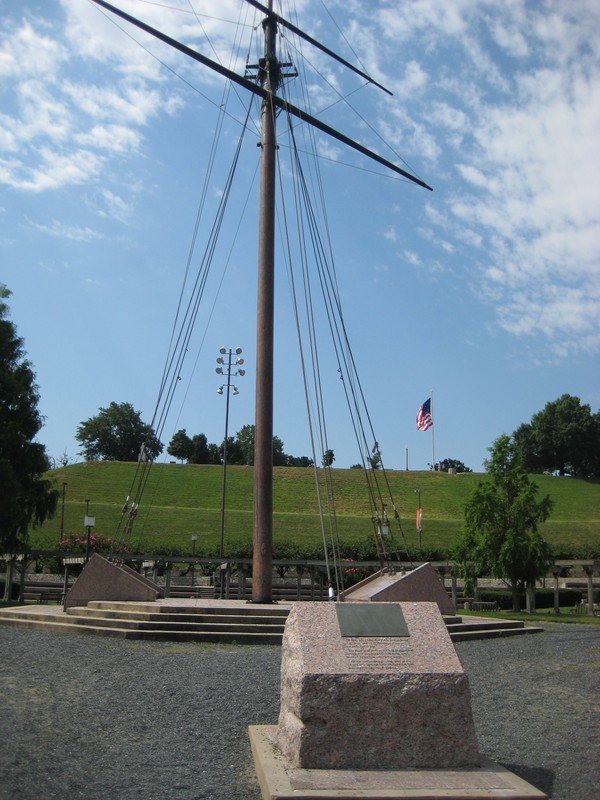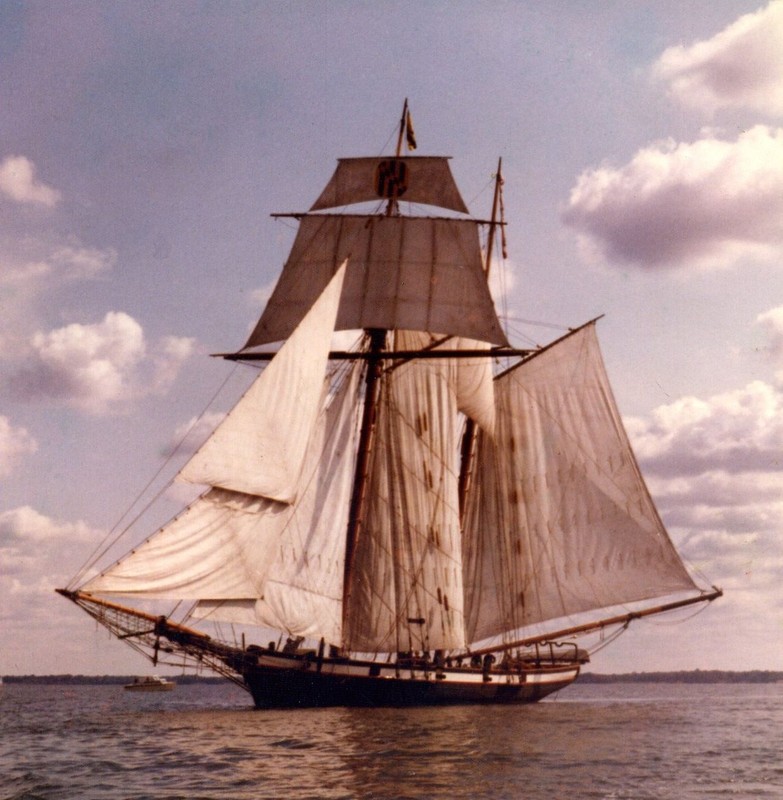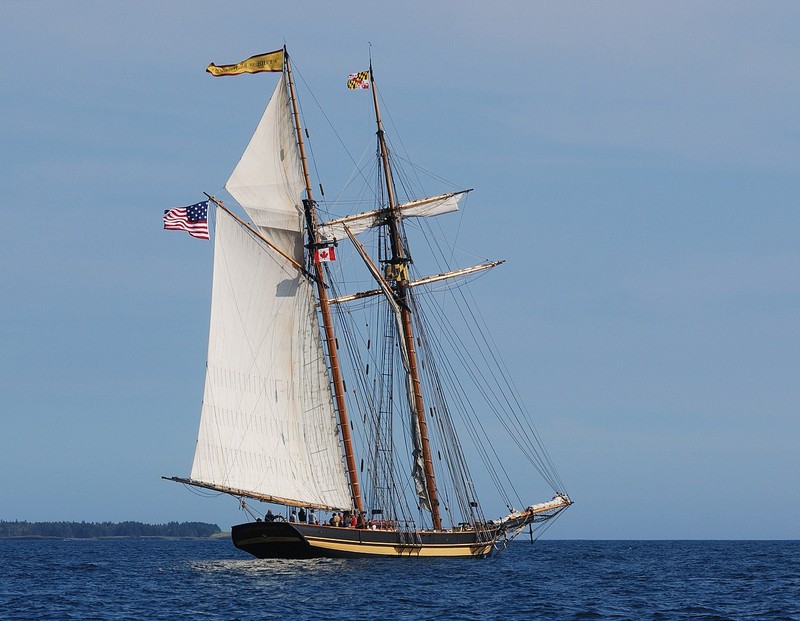Pride of Baltimore Memorial
Introduction
Text-to-speech Audio
This memorial commemorates the Pride of Baltimore, a replica topsail schooner vessel that was tragically lost in the Caribbean Sea on May 14, 1986. The captain and three crew members died in the incident; eight survived. It was built in 1977 as part of the project to revitalize the inner harbor and to represent the city and state during its travels around the world. It sailed more than 150,000 nautical miles, visiting ports in the Great Lakes, the east and west coasts of North America, Europe, the Mediterranean Sea, and the North Sea. A second vessel, the Pride of Baltimore II, was built in 1988 to replace the lost vessel and so far it has logged over 250,000 nautical miles.
Images
The Pride of Baltimore Memorial honors the captain and three crew members who died on May 14, 1986.

The Pride of Baltimore was built in 1977

The Pride of Baltimore II was built in 1988.

Backstory and Context
Text-to-speech Audio
The schooner was likely first developed by the Dutch in 16th century and over time it became common in Europe and North America. Its speed and maneuverability made it a popular choice for merchants to transport cargo. In Baltimore, a specific type of schooner called the Baltimore clipper was developed and it became widely used in the city and along the east coast. They usually featured two masts and had a shallow draft, and required a crew of less than one hundred fifty sailors. The schooner's qualities also made it ideal as privateers (vessels commissioned to engage in warfare), slave ships, and blockade runners. During the War of 1812, schooners played a critical role as a privateers in raiding British merchant ships.
The Pride of Baltimore was a replica Baltimore clipper and the first one built in 150 years. A topsail schooner built in Baltimore in 1812, the Chasseur, inspired the Pride's name. The Chasseur was the largest and best equipped topsail schooner built at the time, and during the war it captured or sank 17 British merchant ships. This success earned it the nickname the Pride of Baltimore.
By the 1970s, Baltimore had declined and the city was looking to restore its status as a thriving economic center. The Pride of Baltimore was a big part of this effort. It was commissioned on May 1, 1977 and set sail on its maiden voyage to Bermuda, New York and Nova Scotia, Canada. It became a symbol for the city's revitalization efforts and encouraged people to come downtown. Its demise came on May 14, 1986 on its way home from a trip to Europe when it was hit and capsized by a sudden squall north of Puerto Rico. The surviving crew members floated on a life raft for four-and-a-half days before being rescued by a Norwegian tanker.
Sources
"History of Pride." Pride of Baltimore. Accessed January 30, 2023. https://pride2.org/pride-of-baltimore-ii/history-of-pride.
"Original Pride of Baltimore." Pride of Baltimore. Accessed January 30, 2023. https://pride2.org/original-pride-of-baltimore.
Pitts, Jonathan. "City plans fixes for Pride of Baltimore memorial in disrepair." The Baltimore Sun. May 7, 2012. https://www.baltimoresun.com/news/bs-xpm-2012-05-08-bs-md-pride-memorial-disrepair-20120508-story.html.
"Pride of Baltimore." The Historical Marker Database. Accessed January 30, 2023. https://www.hmdb.org/m.asp?m=20484.
"Pride of Baltimore - America’s Star-Spangled Ambassador." The Historical Marker Database. Accessed January 30, 2023. https://www.hmdb.org/m.asp?m=102957.
Vallar, Cindy. "Fells Point and the Baltimore Privateers." Pirates and Privateers. 2008. http://www.cindyvallar.com/chasseur.html.
All images via Wikimedia Commons
